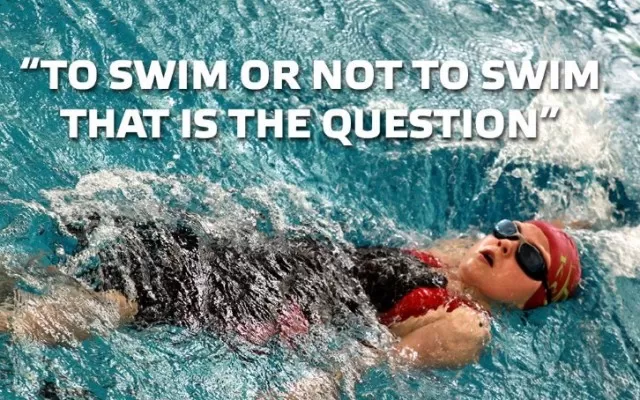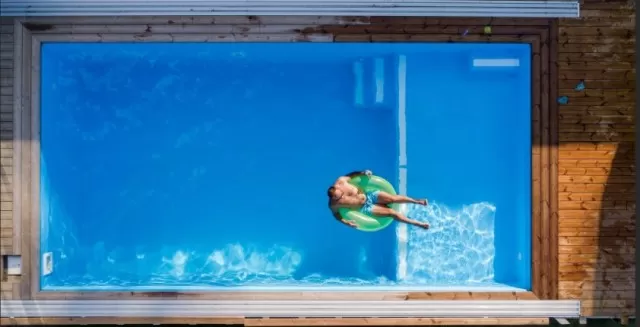Important Factors to Evaluate Before Installing a Pool. The prospect of owning a refreshing swimming pool in your backyard can be truly enticing, especially as the scorching summer months approach.
However, before you jump into meetings with swimming pool companies, it’s essential to take a step back and carefully consider the various aspects involved in selecting, maintaining, and financing your summer oasis. By thoughtfully considering these essential factors, you can embark on your journey to create the perfect summer oasis with confidence and clarity. A well-planned and responsibly maintained swimming pool can be a source of joy and relaxation for years to come, providing a refreshing retreat during hot summer days.
The Aquatic Dilemma: Deciding Whether to Take the Plunge into Pool Ownership

What could be more delightful than basking in the cool waters of a pool during scorching summer days? How about having your very own pool right in the comfort of your backyard! The allure of a personal oasis just steps away from your door, coupled with the luxury of privacy, is an enticing prospect.
Moreover, with your pool accessible 24/7, hosting pool parties and creating cherished memories with friends and family becomes a regular affair. Truly, owning a pool is a dream come true, and turning that dream into reality might be more feasible than you initially thought.
.
However, before you leap into the waters and start contacting pool contractors for estimates, it’s crucial to take the time to do your due diligence.
Making informed decisions is key when it comes to installing a pool and managing its long-term upkeep. There are numerous aspects to consider, and in this article, we’ll dive into the top 10 factors that demand your attention before you make the leap into pool ownership.
From the initial planning stages to the continuous maintenance, every step is essential for ensuring your pool becomes a cherished addition to your home and lifestyle.
So, whether you’re on the fence about investing in a pool or are enthusiastically ready to dive into this new endeavor, join us as we explore the depths of pool ownership, and equip yourself with the knowledge to make the best possible decision for your future aquatic haven.
Contemplating a Pool: Weighing the Pros and Cons
Before taking the plunge into pool ownership, it’s crucial to engage in open discussions with all adults in the household.
Installing a new pool should be a collective decision, with everyone onboard and excited about the prospect. Assessing whether a pool aligns with your lifestyle and preferences is paramount in making a well-informed choice.
Begin by considering your climate.
If you reside in a warm region where the pool can be used for four to six months annually, it’s undeniably a tempting proposition. Additionally, having young children who adore water play could further enhance the appeal of a pool right at home.
Explore whether a neighborhood pool membership could suffice as an alternative, as it may provide similar recreational opportunities without the investment and maintenance that come with private pool ownership.
Take a moment to reflect on your lifestyle and how much time you genuinely spend at home.
If you often enjoy your leisure time within the confines of your property, a pool could become a delightful source of relaxation and entertainment. However, be honest with yourselves: is the desire for a pool fueled by genuine enthusiasm, or is it more of a passing fancy? Ensuring that you will genuinely use and cherish the pool is crucial to justifying the associated costs and efforts.
While the fun and convenience of owning a pool are undeniable, it’s equally important not to overlook the potential drawbacks.
The installation process will disrupt your yard and cause some mess during construction. Moreover, there’s the considerable financial investment to take into account.
Depending on the type and size of the pool, the costs can range from a few thousand to tens of thousands of dollars. Once the pool is in place, consistent maintenance and ongoing expenses will also be part of the package.
If, after careful consideration, everyone in the household agrees that the luxury and benefits of having a pool outweigh the costs and efforts involved in building and maintaining it, then you might be ready to embrace the excitement of pool ownership and transform your backyard into a personal aquatic paradise.
The Impact of a Pool on Homeowner\’s Insurance

One of the primary concerns for prospective pool owners is how the addition of a pool will affect their homeowner’s insurance.
The presence of a swimming pool is often classified as an “attractive nuisance,” meaning it can attract children but also poses potential dangers. As a result, homeowners with pools can be held liable for any accidents or injuries that may occur, even if children access the pool without permission or without anyone’s knowledge.
Typically, standard homeowners’ insurance policies include liability coverage of around $100,000.
However, experts strongly recommend that pool owners increase their liability coverage to at least $500,000. This is because lawsuits resulting from accidents, particularly those involving children, can far exceed the standard coverage of $100,000.
Pool owners have the option to either raise the limit of their existing liability insurance or purchase a separate umbrella policy to extend their coverage.
Another insurance-related consideration is how insurance companies cover damage to the pool itself.
The coverage may fall under “replacement cost value” or “personal property limit. ” If it falls under replacement cost value, the pool is considered part of the home’s structure.
Therefore, to ensure adequate coverage, the homeowner should increase the value of their home insurance policy to include the value of the new pool. However, keep in mind that this may result in increased insurance premiums.
On the other hand, if the pool is categorized under the personal property limit, the homeowner will need to explicitly declare the pool and may need to purchase additional pool-specific coverage.
Standard policies often limit personal property coverage to a percentage of the home’s value, which might not be sufficient to cover the full cost of replacing the pool in the event of damage.
To navigate these insurance considerations effectively, it is essential to consult an insurance representative.
They can provide tailored advice on the best insurance options to protect both the homeowner and the pool adequately. By ensuring appropriate coverage, homeowners can enjoy their pools with peace of mind, knowing they are financially protected in case of any unforeseen incidents.
Installing a pool in your yard can be a complex endeavor that involves various considerations, and while cost may not be an issue, there are practical factors that can significantly impact the feasibility and difficulty of the project.
First and foremost, the available space in your yard will be a critical factor.
If space is limited, it can present challenges to pool installation. Local regulations often dictate setbacks, which are minimum distances that construction projects must maintain from property lines. Depending on your location, setbacks could range from 5 to 50 feet, which means the outer edges of the pool would need to be at least that far from the property line. Moreover, if your property has any rights-of-way or easements, these areas are typically off-limits for construction, further limiting potential pool locations.
The terrain of your yard, particularly any slopes, also plays a significant role.
If your yard has uneven or sloping areas, the land may need to be leveled to accommodate the pool. This can involve excavation or the construction of retaining walls.
These activities can substantially increase the overall costs of the project, as they require specialized equipment, labor, and engineering.
In addition to the available space and terrain, access to your yard is another crucial consideration.
The construction process for most pools involves using excavation equipment, which typically requires a 6- to 10-foot wide access path. If there are obstacles such as fences, prized landscape specimens, or closely spaced houses, it can complicate the equipment’s passage and add to the overall difficulty and expense of the project.
While it is often possible to find solutions to these challenges, such as altering the design or utilizing specialized equipment, the more difficult the conditions, the more expensive and time-consuming the pool installation is likely to be.
It is essential to work closely with experienced pool contractors and designers to assess the feasibility and cost of the project, ensuring that all potential obstacles are considered and addressed before proceeding with the pool installation.
There are various types of pools available to suit different preferences and budgets. Let\’s explore the main options:

Above-Ground Pools:.
Cost: Average $4,000 to $8,000.
Installation Time: Can be installed in as little as a day.
Pros: More budget-friendly, quicker installation.
Cons: Limited customization options, can be visually intrusive.
In-Ground Pools:.
Cost: Between $30,000 and $60,000.
Installation Time: Normally takes six to eight weeks to build.
Pros: Total customization options, more durable.
Cons: Higher total cost of ownership compared to above-ground pools.
Types of Pool Materials:.
Fiberglass Pools:.
Pros: Low maintenance, durable, compatible with salt systems, lowest total cost of ownership.
Cons: Higher initial cost compared to vinyl, limited customization options.
Concrete (Gunite) Pools:.
Pros: Total customization, extreme durability.
Cons: Highest maintenance and chemical requirements, highest total cost of ownership, incompatible with salt systems.
Vinyl Liner Pools:.
Pros: Easily customizable, lower installation cost.
Cons: Vinyl liner needs replacement every 5 to 9 years, can harbor algae growth.
Pool Water Treatment Systems:.
Saltwater Systems:.
Pros: Lower chlorine levels, lower total chemical usage, great for those sensitive to chlorinated water.
Cons: Higher setup cost (about $2,000 more than chlorinated systems), potential damage to fixtures and liners.
Chlorinated Systems:.
Pros: Less expensive setup, safer for pool fixtures and liners, easier to maintain and fix.
Cons: Requires more monitoring and chemicals (higher annual cost of chemical usage between $300 and $800).
When choosing the right pool type and water treatment system, it’s essential to consider your budget, maintenance preferences, and long-term costs.
Consulting with pool professionals and understanding the unique features of each option will help you make an informed decision that aligns with your needs and enhances your overall swimming experience.
*The information is for reference only.